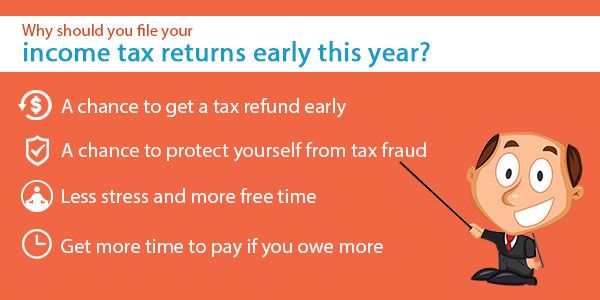Regulators could lift the velvet rope keeping ordinary investors out of private equity in 2020, and for the first time in the industry’s history, firms may soon have the choice to let mom-and-pop investors into their funds.
But firms that choose to do so will have to seriously boost their internal systems—and get comfortable with a host of new risks, say legal and operational experts.
Over the coming year, the Securities and Exchange Commission is expected to release a draft rule that would expand access to private funds for so-called retail investors, or people who don’t meet the current income and wealth requirements for private investments. investments. The regulator has already proposed one change in that direction—expanding the so-called accredited-investor standards—with more and bigger changes expected to follow.
While the shape of the proposal, expected next September, is up in the air, the agency and chairman Jay Clayton appear committed to loosening restrictions on who can invest in private equity and other private investments.
Despite the massive capital raising opportunity such investors could represent, the majority of private equity firms may not have the means, or even the desire, to tap it.
“For private equity firms, it’s a double-edged sword because it expands the pool of potential investors in a fund, but it also increases the risk,” said Scott Gluck, special counsel for law firm Duane Morris. “I think firms will need to be selective in who they take on as investors.”
Private equity firms, regulatory experts, consultants, lobbyists and investors have expressed many concerns about how private equity and retail would mesh.
Among them are the huge investment in marketing and operations that would be needed to process hundreds or even thousands of small-dollar investments; the greater regulatory scrutiny that follows ordinary investors; the risk of taking on investors with less knowledge of the asset class and less liquidity; and the danger of angering existing limited partners by bringing in a flood of new money.
Because few firms are set up to tackle these challenges, most industry experts expect only a fraction of sponsors to take advantage of the retail opportunity in the short term.
“The firms that will have an easier time are those that are older, larger, with more asset classes and products, and bigger marketing departments,” said Bob Morette, an advisory partner at Bain & Co.
Private equity hasn’t yet solved the basic operational challenges of bringing on a large number of small investors, he said. Firms still have to market their funds to advisers individually, and go through their due diligence—a process that can take up to a year—before an adviser can offer the funds to wealthy clients, he said. Firms still have to process all the subscription documents and manage capital calls individually from each investor.
“Most of the players on the small and medium side are just going to say no, there’s too much work, it’s too costly, and I don’t need to do this,” he said.
Private equity’s elusive dream
Breaking into retail has been the dream of many private equity firms for decades, for the simple reason that no other pool of money compares with it in size. PricewaterhouseCoopers estimated that as of 2016, individuals with at least $100,000 in investable assets held $139.5tn world-wide, nearly twice the combined holdings of pension funds, sovereign wealth funds and insurance companies.
Blackstone Group Inc. has been perhaps the most aggressive private-equity firm in targeting wealthy investors, and allows individuals with as little as $1m to invest in their funds. President Jon Gray said in October the firm is on track to raise $25bn from retail investors in 2019, including family offices.
Firms have taken different strategies to access rich individuals. Blackstone markets heavily to individual advisers. Other firms focus on offering their funds through large asset managers and wirehouses. Firms have also invested in companies that let advisers offer their clients suites of private equity fund investments—for instance, Carlyle Group and Blackstone have backed iCapital Network, and KKR has backed Artivest.
Other firms have launched private equity mutual funds, but these vehicles—which are limited to accredited or qualified investors—have had relatively little pickup compared with traditional private equity funds. Partners Group launched the first such vehicle, which remains the largest at about $5.1bn as of Sept. 30.
The true prize for asset managers is the 401(k) market, which is also the hardest for private equity to crack. Such plans held $8.4tn as of June 30, according to the Investment Company Institute, about $5tn greater than the total sum managed by private equity and venture-capital firms, according to Preqin.
Currently, 401(k) plans are all but off limits for illiquid alternative asset classes like private equity. Companies that sponsor retirement plans are afraid of getting sued by plan participants for offering expensive investment choices like private equity. The Department of Labor, which sets the rules for company-offered retirement accounts, would need to issue a ruling to reduce the liability for defined contribution plans that offer private equity.
“The DC plan sponsor community is eager for additional advice from the Department of Labor that will specifically address concerns around litigation,” said Robert Collins, a managing director with Partners Group.
Without such advice, raising money from 401(k) participants is difficult. Pantheon Ventures in 2017 changed the fee structure of its private-equity mutual fund to make it more appealing to retirement plan sponsors. Pantheon now offers an option of paying only a performance fee, with no management fee, a change intended in part to address litigation concerns, the firm said. However, Pantheon’s private-equity mutual fund hasn’t seen a massive influx of capital, holding about $155 million as of Sept. 30.
While the Department of Labor hasn’t said it plans to address the risk of litigation, help may come from the courts. The Supreme Court recently heard oral arguments in a case in which Intel Corp. was accused of breaching its fiduciary duty by offering private equity funds and other alternative assets in company retirement plans.
A positive outcome for Intel could encourage other companies to offer private equity with less fear of a lawsuit, said Josh Lichtenstein, a partner with law firm Ropes & Gray.
“If the case winds up proceeding on merits and Intel wins, I think you’ll see a lot of interest quickly from plan sponsors,” said Lichtenstein.
Regulators to the rescue?
The changes the SEC is contemplating wouldn’t sweep aside all the barriers between private equity and retail investors but would be a significant help.
The ideas the SEC presented in June “could potentially be quite significant” for allowing retail investment in private equity, said Michael Doherty, a partner at Ropes & Gray.
The biggest boon would be the elimination of a restriction stating mutual funds that invest 15% or more of their assets in private funds can only accept money from accredited investors, he said. Accredited investors are people with an annual income above $200,000 or at least $1m in liquid assets.
Removing that restriction—which isn’t a formal rule but an informal policy—could allow private equity firms to offer closed-end mutual funds tailored for the true retail market.
Firms could either build mutual-fund distribution and reporting systems—a daunting task—or partner with an established mutual-fund company, said Doherty. Smaller and mid-market firms could offer their funds to retail investors through fund of funds structures set up by established mutual fund managers, according to Doherty.
The American Investment Council, a private equity trade and lobbying group, also advocated for eliminating the rule that only accredited investors can back private funds of funds, among several changes it recommended in a September comment letter to the SEC.
The SEC last December proposed extending accredited investor status to people who can demonstrate expertise in financial markets—by having earned certain professional licenses or educational degrees -- who don’t meet the income or asset thresholds. It also asked for comment on whether people advised by brokers should be considered accredited.
If these changes are eventually put in place, they could make it much easier for private equity firms to raise money from ordinary investors. But the shape of any final rule remains to be seen, and it is unclear how many more people would qualify under new standards.
Reasons for caution
The American Investment Council and the Association for Corporate Growth, the two main private equity trade groups, both wrote to the SEC in favour of reform.
But a group representing private equity investors, the Institutional Limited Partners Association, urged restraint, saying a flood of money from unsophisticated investors could lead to a degradation of terms and transparency for all investors, and worsen the already excessive levels of money in the industry.
“Unleashing a flood of new retail capital into the private market to seek yield will likely result in reduced returns for everyone in the marketplace,” Steve Nelson, ILPA’s chief executive, wrote in a comment letter to the SEC.
A recent survey showed broad opposition among limited partners to the idea of letting ordinary investors into private equity. Advisory firm Coller Capital found 73% of limited partners said private equity isn’t a good fit for retail investors, against 27% in favour.
Some investors are concerned about managers pushing into retail for the same reasons they worry when managers rapidly expand in fund size or move into new products, said Morette.
“Smart institutional investors always worry about the managers they like getting too big, and too distracted,” he said.
Beyond the possibility of bothering existing investors, some firms are concerned that taking on retail investors means more risk of regulatory oversight. The current SEC leadership is chiefly concerned with ordinary investors, largely leaving institutions and other private fund investors to fend for themselves. A shift of retail into private equity could change that, said Gluck.
“One would expect a direct increase in regulatory oversight the more retail investors are permitted into these investments,” he said.
A further source of caution is the risk that individual investors would default on their capital calls, particularly during a recession. Retail investors, by definition, have less of a capital buffer to soften a downturn, and even a small number of defaults can become an operational nightmare for private equity firms.
Many firms may prefer to avoid the headache, particularly if they are having little trouble raising money from institutions.
Whatever the SEC decides to do, “I don’t think it’s as if the levee will burst and you’d see a mad rush of retail investors into private funds,” Gluck said.












